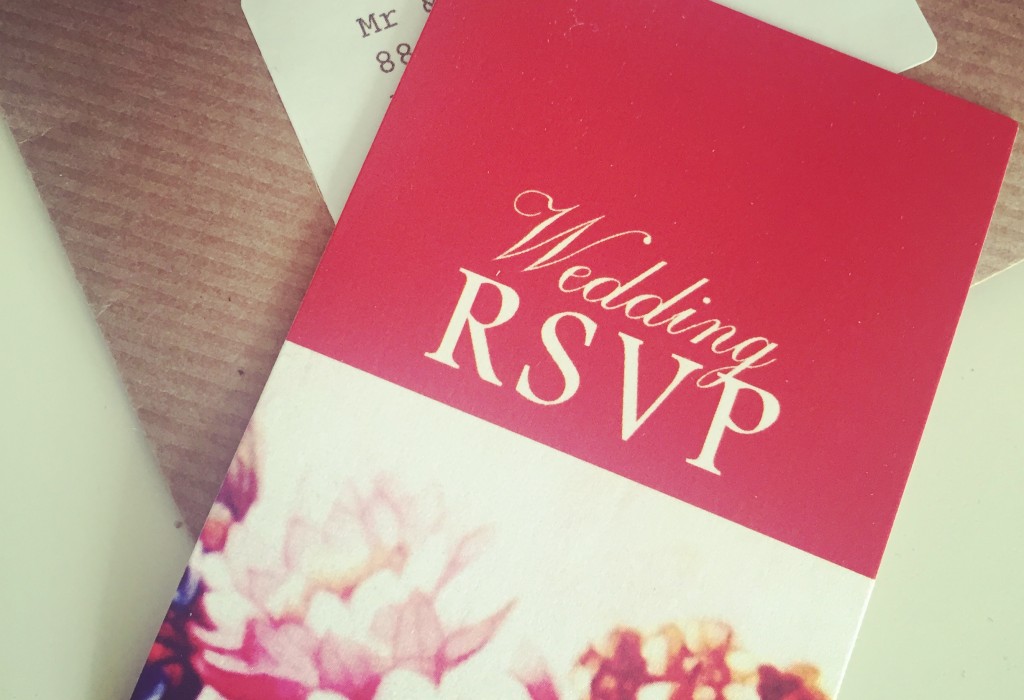 One of the most common questions we get asked by our clients is about what type of information to include in their RSVP cards. We totally get it – it can become quite confusing, especially when you have multiple events with a range of different guest lists.
One of the most common questions we get asked by our clients is about what type of information to include in their RSVP cards. We totally get it – it can become quite confusing, especially when you have multiple events with a range of different guest lists.
So here’s a quick guide to help you solve those RSVP woes:
If you’re sending out an invitation card with multiple inserts then we always recommend sending out a separate RSVP card for each event rather than placing a list of all of the events on one card with a tick-box system. This is to avoid the unfortunate occasion where guests feel slightly annoyed or sad about potentially not being invited to some events.
Whether you’re having one event or multiple ones, you’ll need to get the exact number of people attending, and in some cases the names of the guests so you can add them to your seating chart. Some couples will opt to have a blank box next to the ‘number of guests attending’ line (for people to fill in a number), which is fine if your guests are clearly aware of who and how many people are invited. This can sometimes get a little tricky with people adding on extra guests (unaware that they’re not all invited).
To avoid this situation you can include a ‘we have reserved _ seats in your name’ as this will make them aware of exactly how many people are invited. This can be time consuming, but worth the effort if you’re quite particular. If however you’re concerned not just about the number, but the name of the actual guests who will be attending you can go one step further and add in the guests’ names on a blank line. If you don’t mind which 2 guests from the family will attend for example, then leave the line blank for them to fill in their own names (but do add a ‘name’ prompt as some people may not know what the line is for).
We would say it’s certainly a good idea to send an envelope with a return label with your invitation card so that it’s easier for your guests to respond. After all, you want to make the whole process as smooth as possible so you’re not left with plenty of people to chase close to the wedding date.
A recent trend that has become quite popular is for couples to send out a post card-type RSVP card so the return address and event details are on one side and a nice image is places on the other. Though we tend to prefer a traditional envelope, this is also an option for people who only have one event. It can get messy with multiple events.
This is a tricky one as it really is entirely up to you. If however you were to ask us for our opinion, we’d say it is definitely good wedding etiquette to provide a stamp. Not only will it mean people are more likely to reply (simply because they don’t have the hassle of looking for and purchasing a stamp, which means it will save you the time of having to call people up), but because it shows the guest(s) that you have genuinely thought about them, which will leave them in a positive mindset ahead of your event.
Not at all! Weddings are all about fun and this can start with your invitation. It’s not uncommon for couples to ask their guests to list a few suggestions for the music playlist on the night or ask them to list any other special requirements. Unlike what people may say, the wedding is all about the guests!
You should try and aim to have all of your cards returned 3-4 weeks prior to the wedding day. This will leave you with enough time to chase anyone who hasn’t responded and also plan other things like seating charts and pass on all the relevant information to your wedding stationery supplier.
As with everything wedding-related, everyone will have a personal choice and we’re simply here to guide you with what we feel works best. You may decide otherwise….
Team RickyDicky
Posted By
Team RickyDicky
Categories
Inspiration
Tags
cards, invitations, RickyDicky, rsvp, wedding